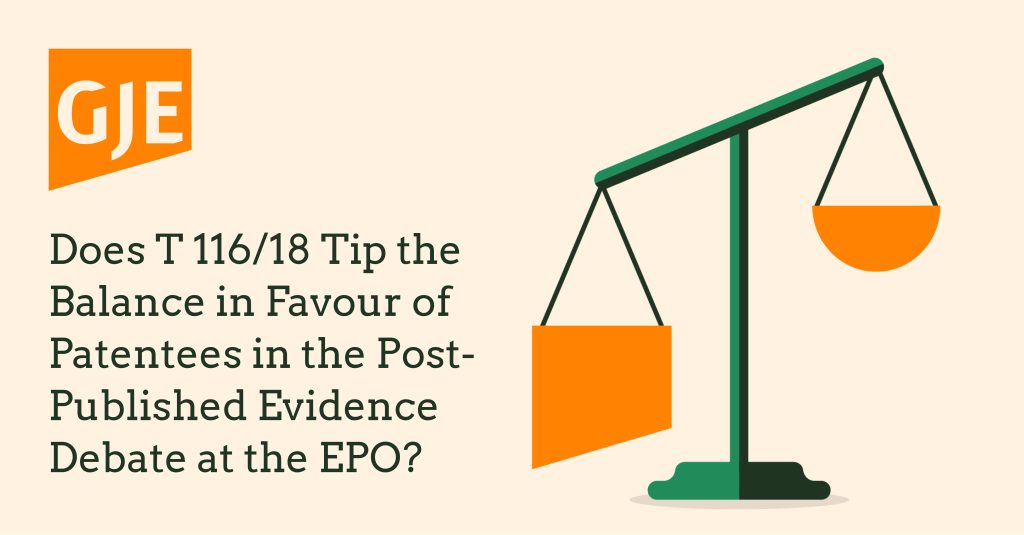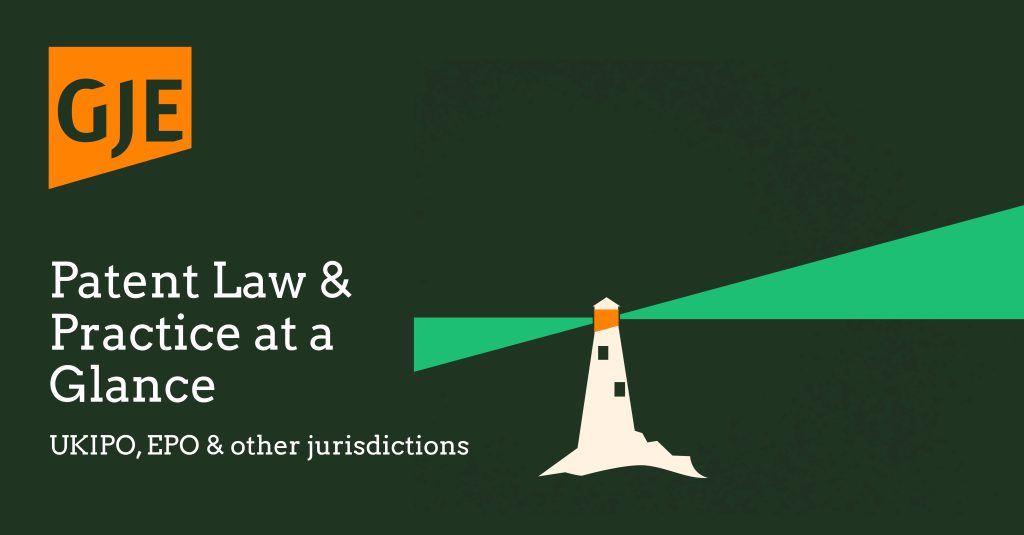
The UK High Court has issued a judgment in Newron Pharmaceuticals SPA v UKIPO,[1] upholding the decision not to issue a supplementary protection certificate (SPC) relating to the use of safinamide (Xadago) in combination with levodopa (L-dopa) and a peripheral decarboxylase inhibitor (PDI) in the treatment of Parkinson’s disease. This judgment highlights the paramount importance of ensuring continuity between the active ingredients required by the basic patent and those approved in the marketing authorisation. Any difference in product definitions could be detrimental to an SPC application, even if the marketing authorisation recommends the specific combination noted in the patent.
Newron’s Parkinson’s Disease Treatment
According to Newron’s patent EP 1 613 296, L-dopa was understood to be one of the leading anti-Parkinson’s drugs at the time of filing. It is particularly effective when administered in combination with a PDI, such as carbidopa or benserazide, to minimise its peripheral metabolism within the body. This allows L-dopa to cross the blood–brain barrier to exert its pharmacological effect on the brain. The innovation underlying Newron’s patent stems from the synergistic effect of safinamide on L-dopa/PDI therapy, leading to an improvement in Parkinson’s disease symptoms and a delay in disease progression compared to each therapy alone.
It is clear from the patent that synergism requires all three active ingredients, i.e., safinamide, L-dopa and a PDI, to effectively treat Parkinson’s disease. This is reflected in independent claims 1 and 7 of the patent, which refer to all three components.
Newron sought to extend protection for this treatment by applying for a UK SPC based on the marketing authorisation EU/1/14/984, which relates to a medicament called Xadago, and the UK validation of EP 1 613 296.
Medicinal Product Inconsistencies
In terms of SPCs, a ‘product’ is defined as the active ingredient or combination of active ingredients for which protection is sought. Newron’s patent claims require safinamide, L-dopa and a PDI to achieve the synergistic effect. Therefore, the ‘product’ in this case is the combination of these three active ingredients, a fact not disputed by Newron.
The marketing authorisation for Xadago consistently refers to safinamide methanesulfonate as the sole active ingredient. The summary of product characteristics (SmPC) states that Xadago 50 mg and 100 mg are film-coated tablets containing safinamide methanesulfonate equivalent to 50/100 mg of safinamide, respectively. No other active compounds are mentioned as part of the manufacturing conditions (see Annex II). Xadago is indicated for the treatment of adult patients with idiopathic Parkinson’s disease as an add-on therapy to a stable dose of L-dopa alone or in combination with other Parkinson’s disease medicinal products in mid-to-late-stage fluctuating patients. However, the PDI is not explicitly mentioned. At best, the SmPC suggests Xadago may be used with L-dopa (but not a PDI); however, neither L-dopa nor a PDI is included in the Xadago formulation. In response, Newron asserted that patients would already have access to L-dopa/PDI therapy at the time, and therefore, these actives did not need to be included in the Xadago authorisation. And so, unlike most of the recent case law in this area,[2] the focus shifts from whether the patent covers the marketable product to whether the marketable product contains the active ingredients required by the patent.
To be granted an SPC, the regulations require a valid authorisation to place the product on the market as a medicinal product.[3] Newron argued that the inconsistency between the product required by the patent and that covered by the marketing authorisation was inconsequential, and they maintained that the marketing authorisation made it clear that Xadago was intended to be used in combination with other known therapies, i.e., L-dopa/PDI. Newron faced an insurmountable body of SPC jurisprudence that prevents authorised medical use from forming part of the product identification itself. The present judgment provides an excellent summary of the case law leading to this fact.[4] Unfortunately for Newron, it is immaterial whether the marketing authorisation recommends the administration of Xadago with L-dopa (which, in any case, does not contemplate PDIs). What matters is whether the particular active ingredients are present in the authorised product.
SPC Issues for Combination Therapies
Patentable combination therapies rightly require reference to all essential active ingredients in the claims. This is justified as those actives are essential in establishing the invention’s technical effect, which is often based on their synergism. As the present case highlights, a marketing authorisation may be issued for just one of those actives, particularly when the others are commonplace. However, reference to a suggested combination therapy is not enough to overcome a mismatch in the definition of the patented product and the authorised product. This issue is reconcilable, since Article 4 of the SPC regulations only confers protection for a product covered by a marketing authorisation, albeit any use of that product that is authorised before the expiration of the SPC (but that remains within the scope of the patent). In the present case, this includes safinamide as a monotherapy, which is clearly outside the scope of the combination therapy patent and its underlying contribution to the field.
The present judgment, the principle of which will be followed across Europe, highlights a key problem in obtaining SPCs for combination therapies, particularly for ‘add-on’ therapies where patients inevitably have access to the remaining active components. If you would like to discuss your SPC filing strategy or have any questions in relation to SPCs, please contact Ian Jones here.
[1] [2023] EWHC 1471 (Ch)
[2] Case law usually examines whether the basic patent protects the product of the marketing authorisation, whether the product has not already been the subject of an SPC or whether the marketing authorisation is the first for the product [Articles 3(a), 3(c) and 3(d), respectively, of Regulation (EC) No 469/2009 of the European Parliament and of the Council (the ‘SPC regulations’)]
[3] Article 3(b) of Regulation (EC) No 469/2009 of the European Parliament and of the Council
[4] Contains an excellent statement that European/UK law is ‘internally consistent save for a short-lived excursion in Neurim’, which completely trivialises the practice of obtaining new medical use SPCs that went on for nearly a decade before being overruled by the Santen decision (C‑673/18, see our article Santen: A Clear View of Drug Repurposing and a Loss of Sleep for Those Relying on Neurim)




